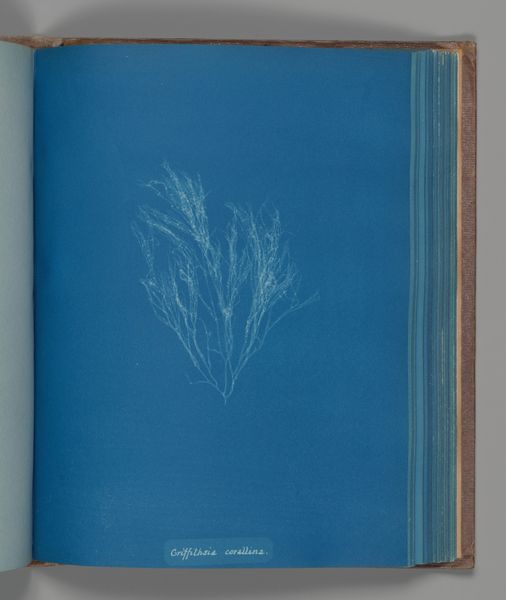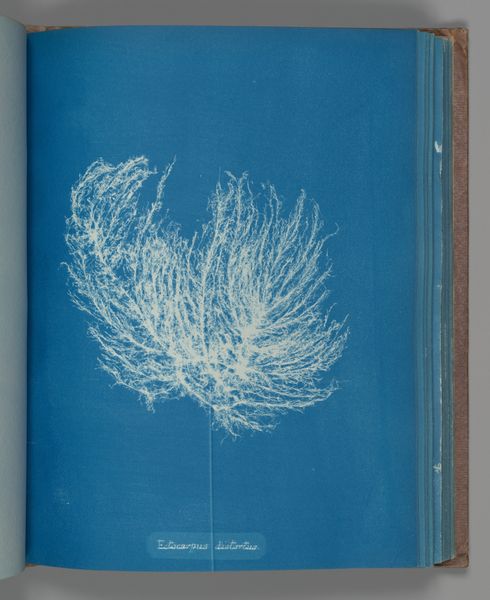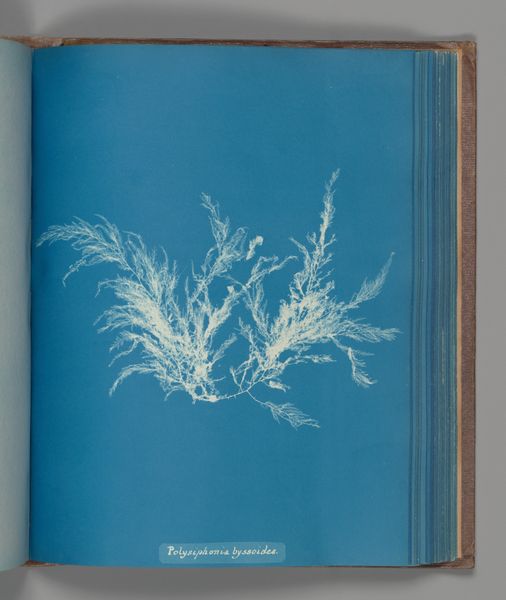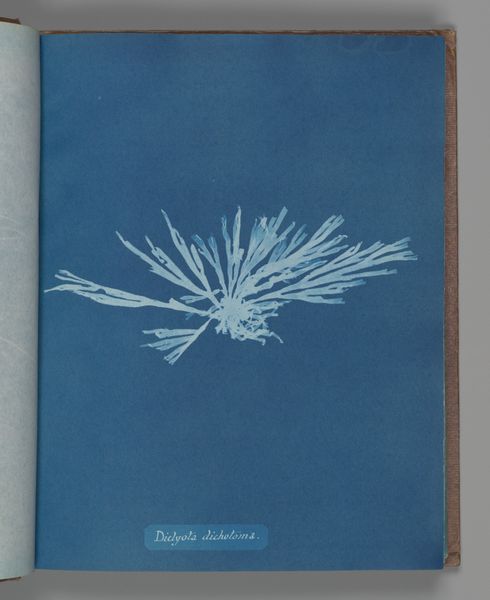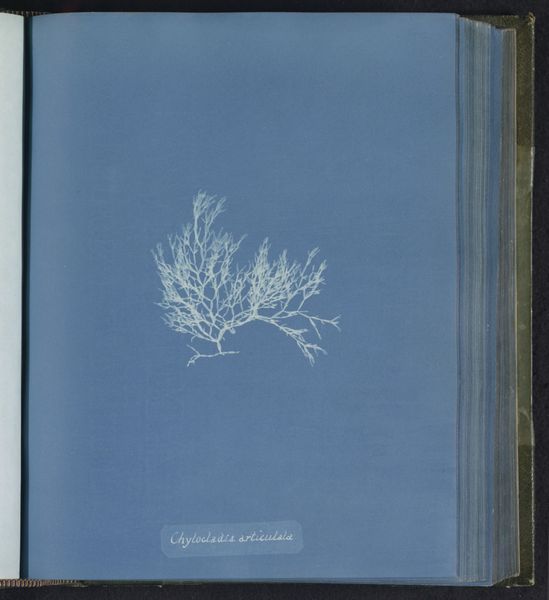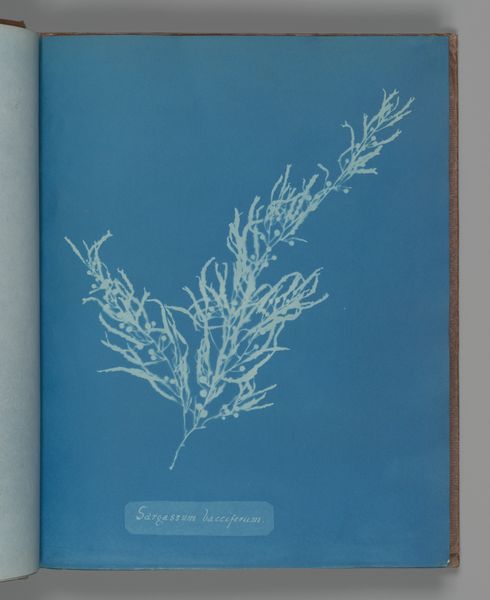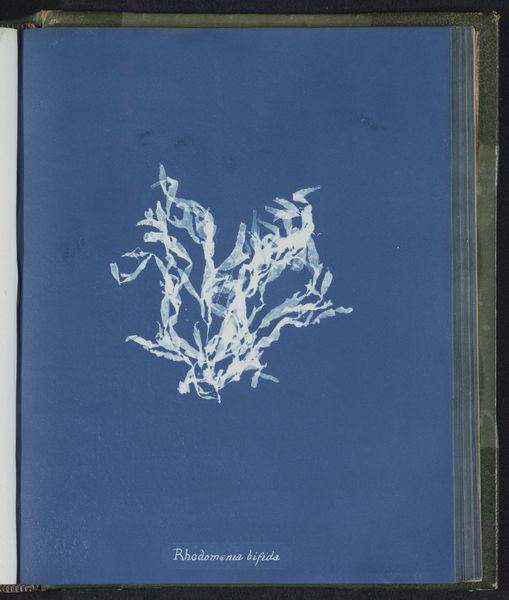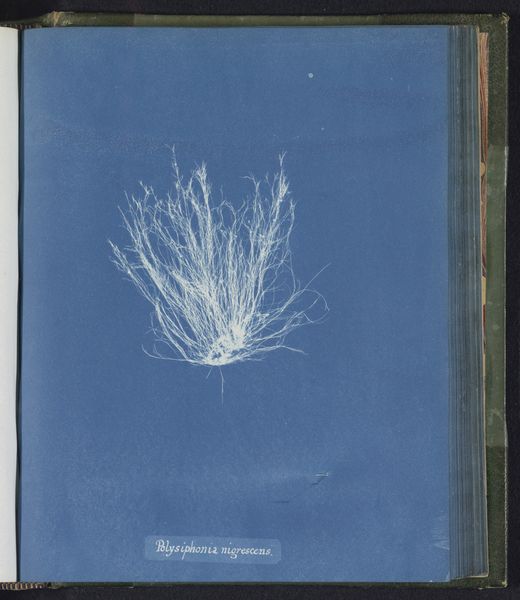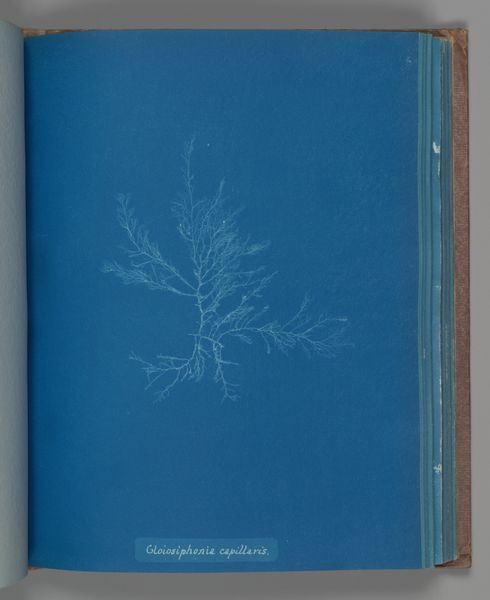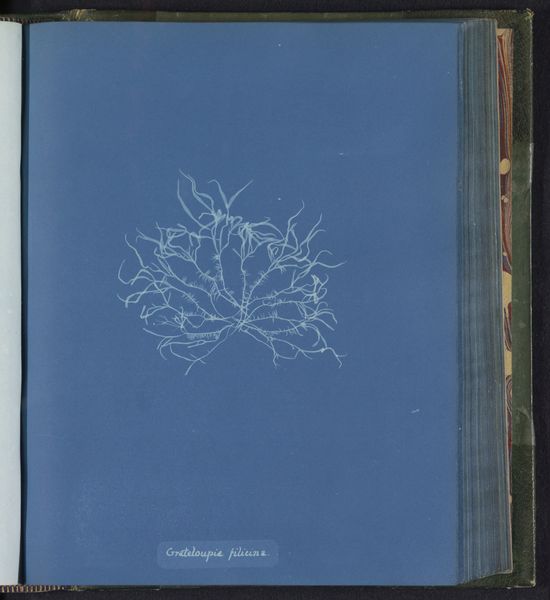
print, cyanotype, photography
# print
#
cyanotype
#
photography
Dimensions: Image: 25.3 x 20 cm (9 15/16 x 7 7/8 in.)
Copyright: Public Domain
Curator: Immediately striking! It's ghostly, like a memory barely clinging to the deep blue. Is this one of Atkins' cyanotypes? Editor: It is indeed. This piece, "Bangia fusco-purpurea," comes from a series created by Anna Atkins between 1851 and 1855. She pioneered the cyanotype process, using it extensively in her botanical studies. Curator: It’s essentially a photogram, right? Placing the seaweed directly onto sensitized paper. Editor: Precisely. The printmaking underscores the labor and the direct interaction between nature and the artistic process. I'm fascinated by Atkins’ dual role as both a scientist and artist. She was meticulously documenting algae specimens. We could analyze the rise of scientific methods through mass media at the time and explore its commercial applications through botanical illustrations for wide consumption. Curator: Yes, and consider the context—Victorian society's obsession with categorizing the natural world. But even setting that aside, look at the composition! The way the delicate structure of the algae contrasts against the intense blue... It’s arresting. The blue functions almost as a void, isolating and emphasizing the fragile form. It also begs semiotic questions like "what do these particular specimens represent?" Editor: A void maybe but what kind of work did Atkins have to undergo to present us with that kind of symbolic tension? As the cyanotype process became available for industrial applications such as reproducing diagrams or textual facsimiles, how does her approach resist standardized, commodified productions by imbuing them with a certain artistic touch? Curator: Still, the pure contrast and intricate details captured are so evocative. What’s rendered is that translucent texture of the seaweed and that specific shape it adopts to deal with fluid mechanics underwater... A feat given the rudimentary technology and equipment that she worked with. Editor: But to focus solely on formal elements neglects the broader implications. Atkins wasn’t just creating pretty pictures. She was disseminating scientific knowledge at a time when access to such information was limited, especially for women in scientific fields. This could have been an assertion against limited opportunity through the embrace of the traditionally gendered practice of arts! Curator: You're absolutely right, and that socio-historical context adds another layer of richness to the work. I see now it becomes more than just an aesthetically pleasing image; it's a product of its time, reflecting scientific advancement and cultural biases, and then critiquing both through both artistic practice and professional pursuits. Editor: Precisely! I appreciate now that you appreciate Atkins' mastery lies not just in her technique, but in her strategic deployment of it. This photograph encapsulates this tension that I find personally riveting.
Comments
No comments
Be the first to comment and join the conversation on the ultimate creative platform.

